The South Korea demilitarized zone (DMZ) separating North and South Korea is one of the most heavily fortified borders in the world. There are only two places in South Korea where you can view North Korea as a half or full-day trip: Odusan Unification Tower and Imjingak in Paju. Imjingak is the more popular of the two, with more to see with an opportunity to go to the Joint Security Area (JSA). Let’s check out the sights of South Korea DMZ from Imjingak, the Dora Observatory overlooking North Korea, and the 3rd underground infiltration tunnel.
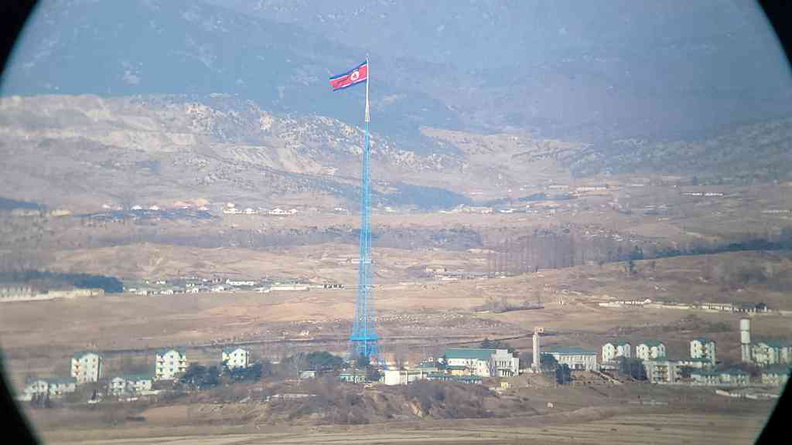
You need a guide to enter the South Korea DMZ area
While the Imjingak open space is open to all, only guests with guides are allowed to enter the Paju South Korea DMZ area. You follow with a guided tour that follows a strict time schedule given by the Military office.
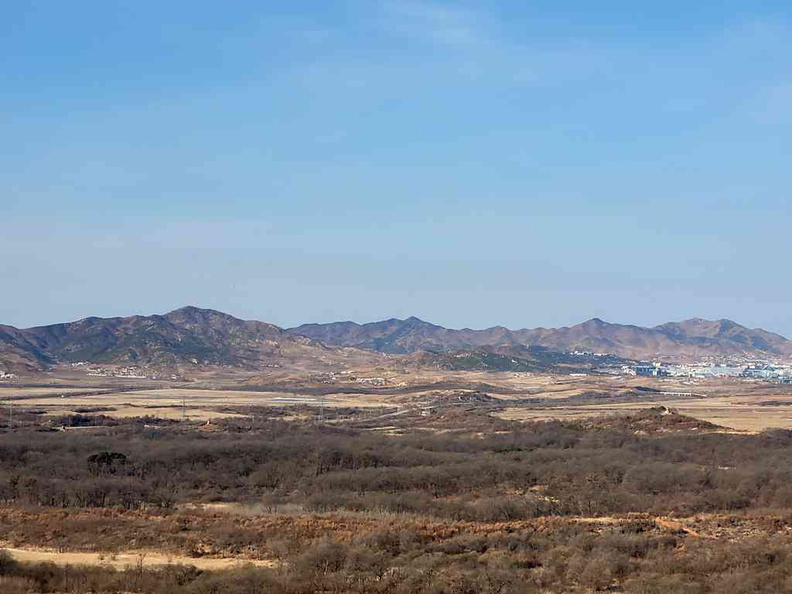
This ensures the safety of guests in the contested and dangerous region between North and South Korea. So you won’t be able to do a self-guided tour or explore the area on your own by foot. You can travel to the location by yourself. The area is an active military zone. Hence all guests must follow a strict schedule to visit all attractions and leave the DMZ.
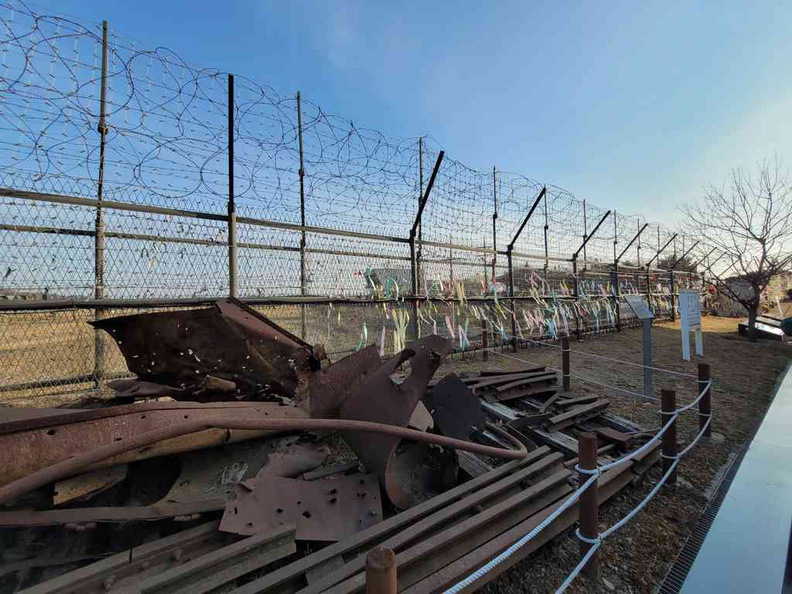
Interestingly, the fences here have active landmine signs plastered all over the walls. You won’t want to be wandering around. Notably, as the DMZ is a military-free zone, with no military deployment allowed within 2 km of the North-South border.
Imjingak village and locomotive
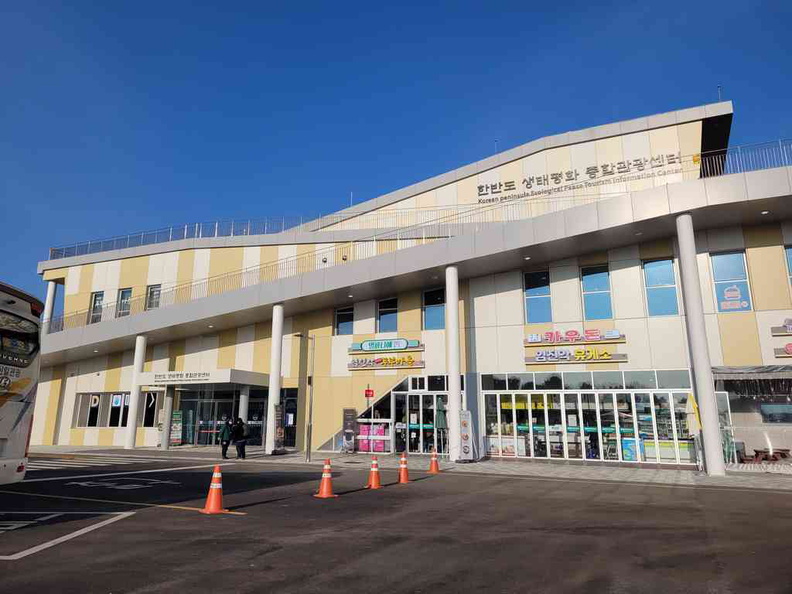
Furthermore, Imjingak was built for North Korean refugees. This is following the announcement of the North and South communities wishing for reunification after the pains of the Korean war.
The laundry list of sights here include the Freedom Bridge, Imjingak peace gondola, Mangbaedan altar for North Korean ancestors who were split by the border, Gyeongui line Steam locomotive at Jangdan station, Dorasan station, and the peace park.
The last train out
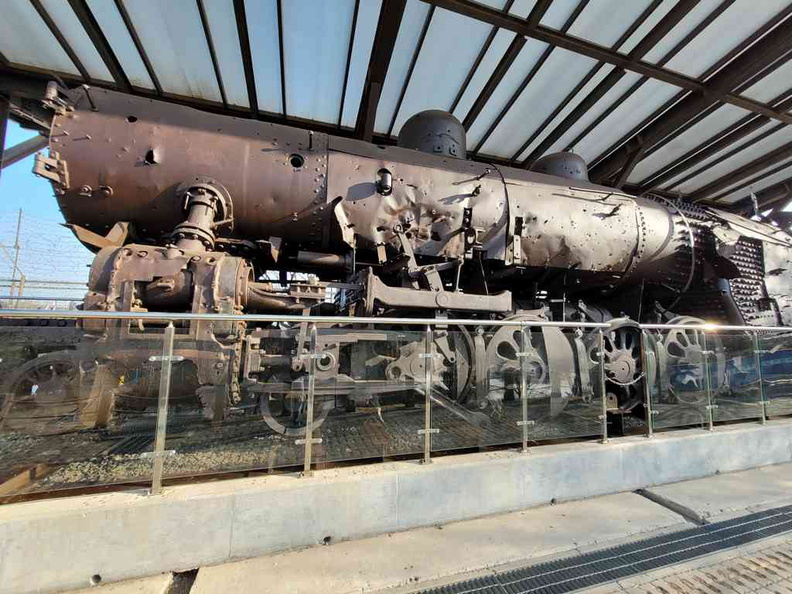
Here you can find a bullet-steam-powered, coal-fired train hauled troops, tanks, and ammunition to the front lines. It was, in fact, it was the last train to cross the Korean border during the war.
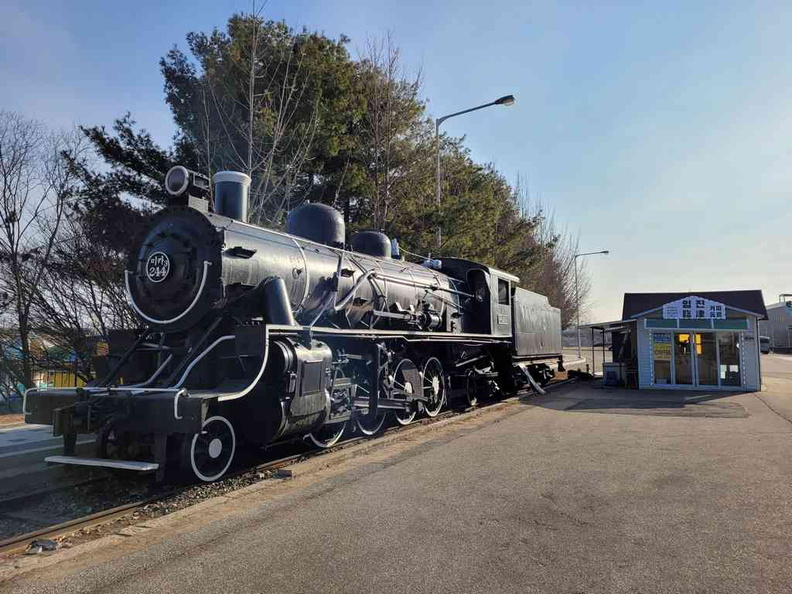
Across the Unification Bridge into the military zone, you can visit points of interest such as Dora Observatory and the 3rd Tunnel.
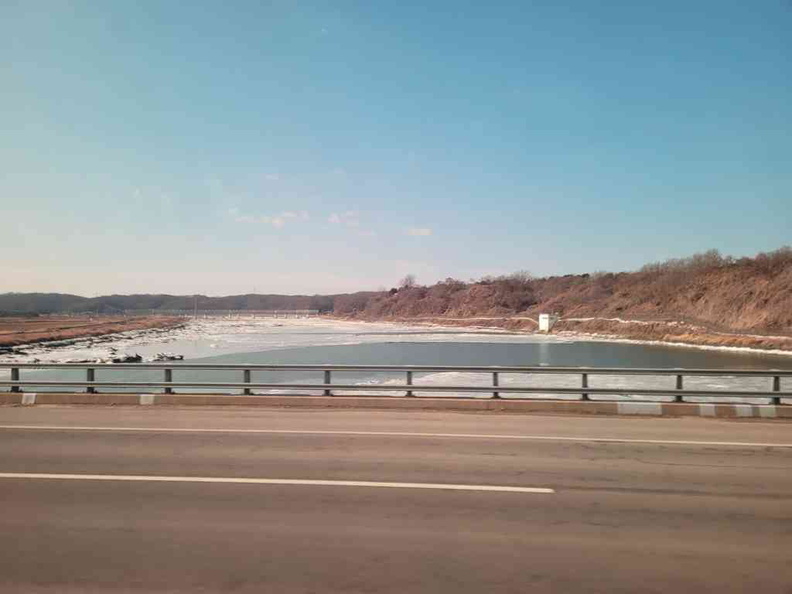
Furthermore, the DMZ was created as part of the ceasefire agreement between the two Koreas. It prohibits military weapons from being deployed within 2km of either end of the North-South border.
Also, you are not allowed to cross the border, but they can enjoy the scenic views of the Imjingang River from the Imjingak pavilion. The pavilion is a peaceful and restful area that also serves as a gallery. This includes hosting an art gallery during my visit.
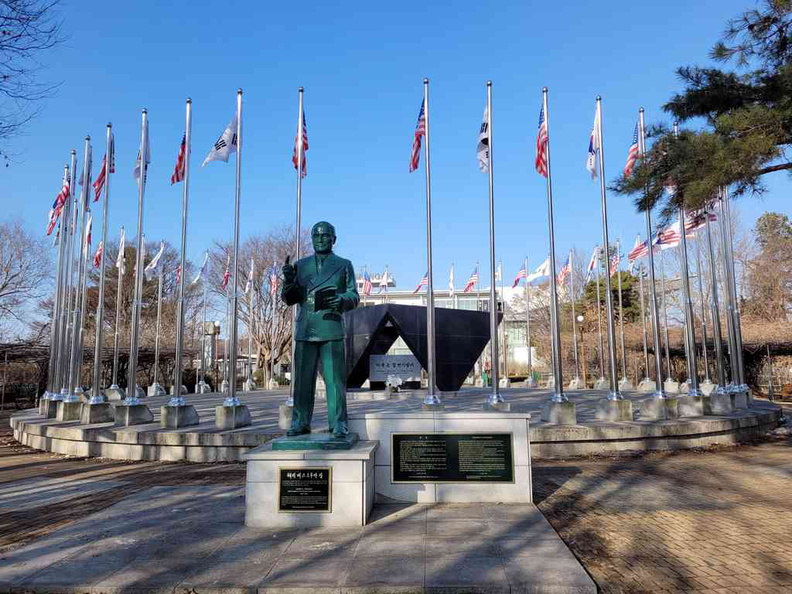
There are number of war memorials here too including one dedicated to lives lost by the US, one for the comfort women, and one for Korean veterans.
Pyeonghwa Land amusement park
Another interesting site to visit (or the check out) in the DMZ is the Pyeonghwa Land amusement park. This park is located near the Imjingak open space. It offers you a chance to relax and enjoy a few rides after a long day of touring.
Also, I found an eerily quiet deserted family amusement park in a highly contested zone bit chilling. This is knowing the region and park can be turned into a warzone anytime in conflict.
Freedom bridge and North Korean currency
Furthermore, the Freedom bridge here was built in 1953 for the exchange of almost 13,000 POWs from the Korean War who crossed the bridge on foot. The railroad bridge is a reproduction of the one that was bombed out during the 1950s Korean War.
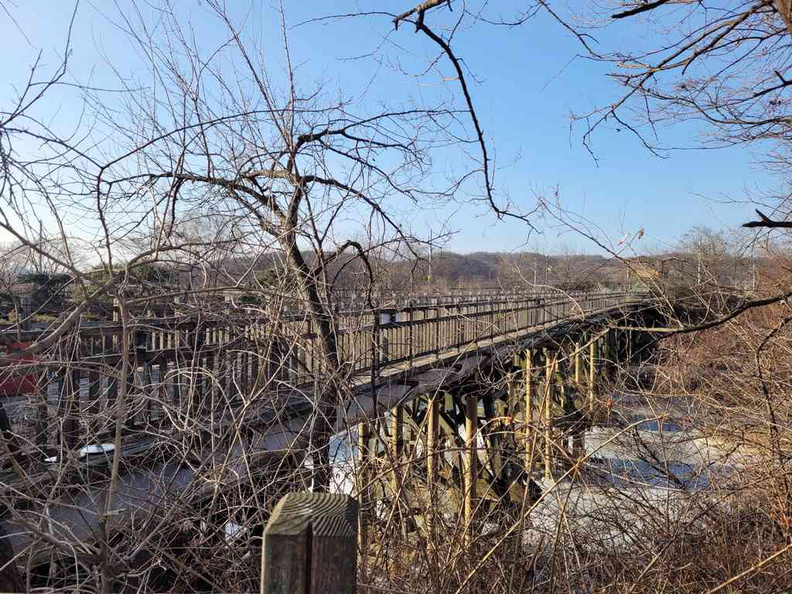
It is possible to cross the Unification bridge by road or the Imjingak railroad bridge into the DMZ area, which is a bombed-out zone. Also, the Dokgae bridge here is a replica of a railroad bridge that was bombed during the Korean War in the 1950s.
Moreover, here between high barbed wire fences, you can view a few static displays here. You can find an impressive steam locomotive that used to serve between the two Koreas. It is also a symbol of unification with Dorasan train station being the last station connecting the South from the North. There is also a small memorial park housing a number of UN-related symbols, flags and memorials.
Here, in the park, you can also find a small gift shop where you can buy North Korean won. The items however are priced at a premium. It is worth noting that the hermit state does not allow the export of their currency beyond their borders, and the store is not willing to share their secret in obtaining them, making them a prized item on sale here.
Dorasan Observatory
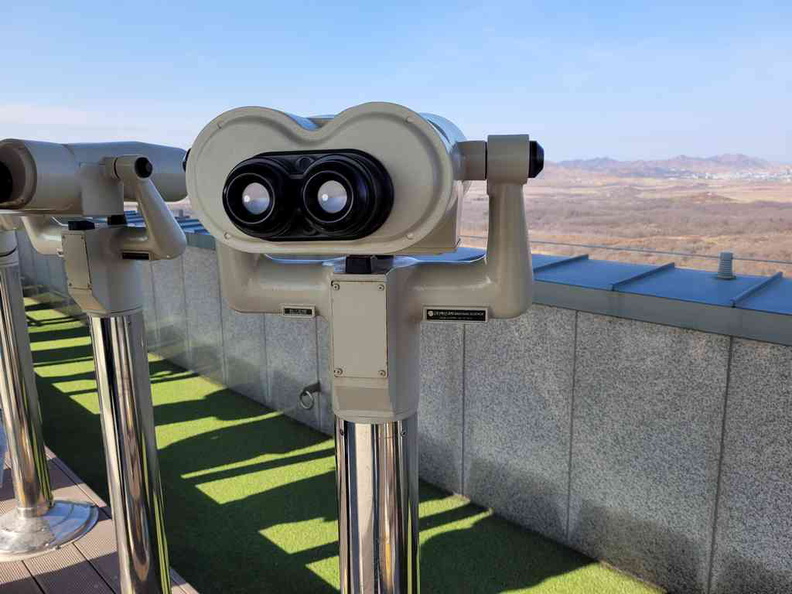
Furthermore, the Dorasan Observatory has a more laid-back atmosphere with a small café which was closed on my visit. You can explore the galleries within the one building at their own pace. Especially catching sights of the North from the observatory with panoramic view of the Imjingang River.
Additionally, the guide at the Dora Observatory told us that although defectors through this South Korea DMZ waterway route and bridge are rare. Though there was a story when a North Korean soldier sped across the border in a military vehicle to avoid punishment from his superiors for staying up late in the North.
Also, from stories told by our Korean guide, most defectors cross using the China side border, where they would usually make their way to South Korea via Mongolia.
Views of the North Korea from Dora Observatory
From the observation deck at Dorasan Observatory. It sits on top of a hill with overlooking views. Up here from the rooftop observation deck, you can see the massive North Korean propaganda flag tower as well as the South Korean flag tower on the near bank.
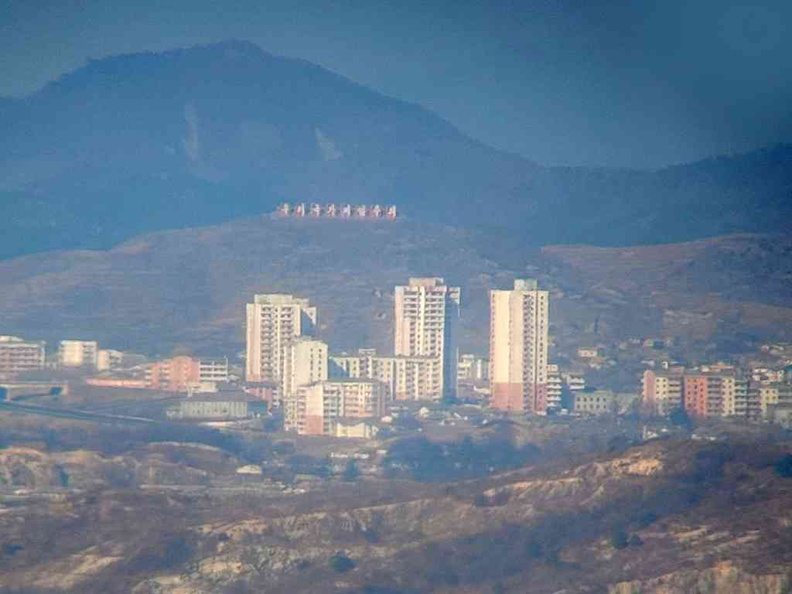
Notably, the South Korean flag is the original Korean flag. The flag of North Korea was created after separation representing the current Democratic People’s Republic of Korea. Still, these oversized towers are more symbolic than purposes of demarking territory.
Also, if you listen carefully, you can hear faint propaganda messages played by tower loudspeakers across the border. The village across the border is said to be fake, with the windows of the buildings painted on.
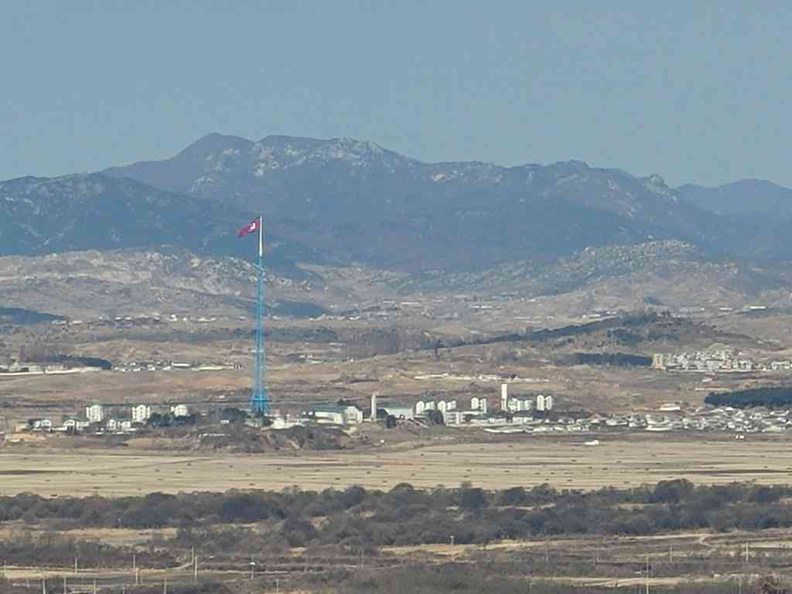
Additionally, during my visit, I spotted a group of people dressed in military-like uniforms, presumably soldiers, on an island bank on the North Korean side of the border. Also, I saw farmers and people running about in farmlands, presumably having fun, as seen through the telescopes.
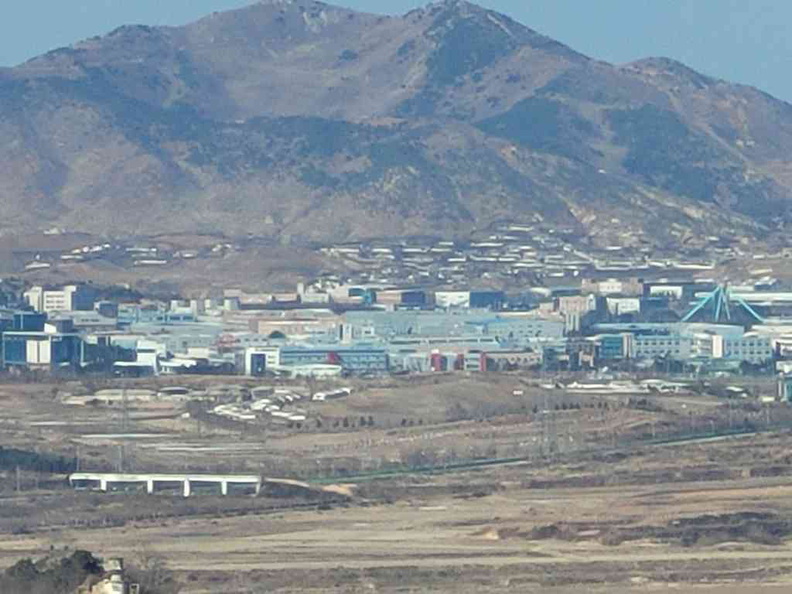
A Propaganda village
Also, from up here, you can see the stark difference in infrastructure and development between the two Koreas. While South Korea has modern infrastructure and vehicles, North Korea appears as a lazy rural village with not many activities or people in sight.
This is because the hermit state limits as many resources and activities along the border as possible. The story is this limits and shield the North people from exposure to external influences. Interestingly, we were told that the South Korean sentry guards here wear sunglasses to cover their eyes, so they can be aware of the North Korean guards who are known to use eye signals to communicate with each other.
Also, the Joint Security Area is the only portion of the Korean Demilitarized Zone (DMZ) where North and South Korean forces stand face-to-face. Also known as the “truce village”.
Dorasan third tunnel
Furthermore, following from the observatory, the Dorasan third tunnel is the other point of interest here. It is one of the four tunnels discovered by South Korea in the 90s. They were dug by North Korea with plans to have undetectable access and invade Seoul.
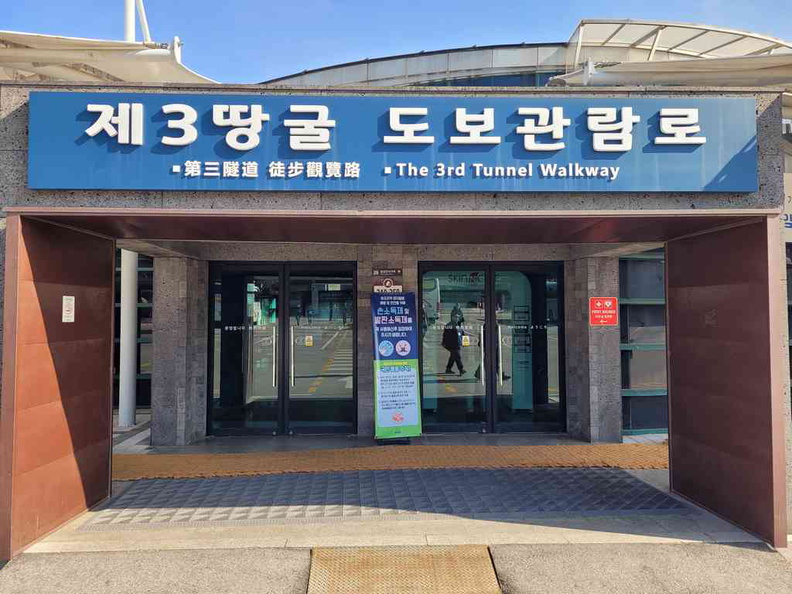
Also, the tunnel attraction has a visitor center with a giftshop selling South Korea DMZ-themed merchandise and ginseng grown in the region. There are also free lockers provided to store your belongings before entering the tunnel.
Here, you can take a tour of the tunnel infographic gallery. This includes a short video presentation and a mini museum about the history of the Korean War and the tunnel’s discovery. Afterwards, you can explore the tunnel on foot, as well as learn more about the tunnel’s construction and its intended purpose.
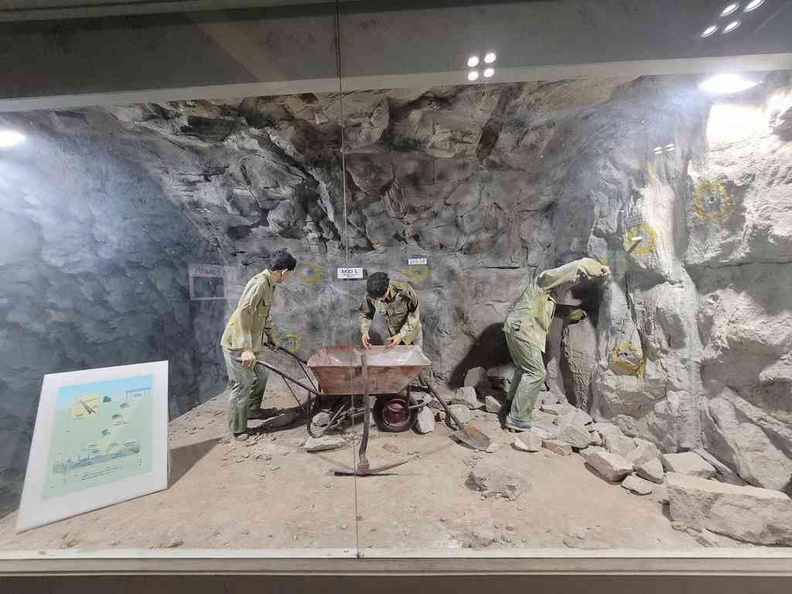
Additionally, you be also issued a lightweight plastic hard hat before entering. The underground tunnel ceiling is quite low with bare jagged rocks. Your decent 75m down underground via a modern tunnel built by the South connecting to the first encounter of the North Korean tunnel. It’s a fascinating and somewhat eerie experience to walk through a tunnel that was meant to be used for an invasion.
Also, it starts with about a 300m downward climb at an 11-degree incline down. There is a monorail train here (for a payable extra) for those who do not wish to walk. Notably, the tunnel is not suitable for those who are claustrophobic or have mobility issues. The tunnel is quite narrow and has a low ceiling. The way down to the tunnel however is ramped and does not have any stairs.
A hand-dug invasion tunnel
Moreover, as told by North Korean defectors who once worked on the tunnel, the tunnel construction progressed at about one meter per day. It was hand-dug quietly mostly by manual labour and small dynamite. This means that the tunnel, which sits at about 1.6km long, was already under construction for nearly 5 years before it was discovered by the South.
Also, when strolling through the tunnel, you can find small boreholes in the bedrock. These were created by the North Korean workers drilling into the rock to create space for explosives. Most parts of the tunnel are also supported by scaffolding, which helps in shielding against leaking groundwater. You come to the end of the public-accessible portion of the tunnel 170m in, which leads to dead-end covered by a steel door and barred wire.
Interestingly, the North’s cover-up story of the tunnel construction was that they were mining for coal. This is evidenced by small smears of black coal on the tunnel walls laid by the workers. Not that something the South would believe, considering the DMZ is not known to have any coal in this region.
Wrapping up
My tour ends after completing the third tunnel. The climb up from the tunnel can be quite an exercise for you too. But the cool underground temperatures do make it a rather pleasant climb. Your tour would most probably end at a small village back on the Imjingak side.
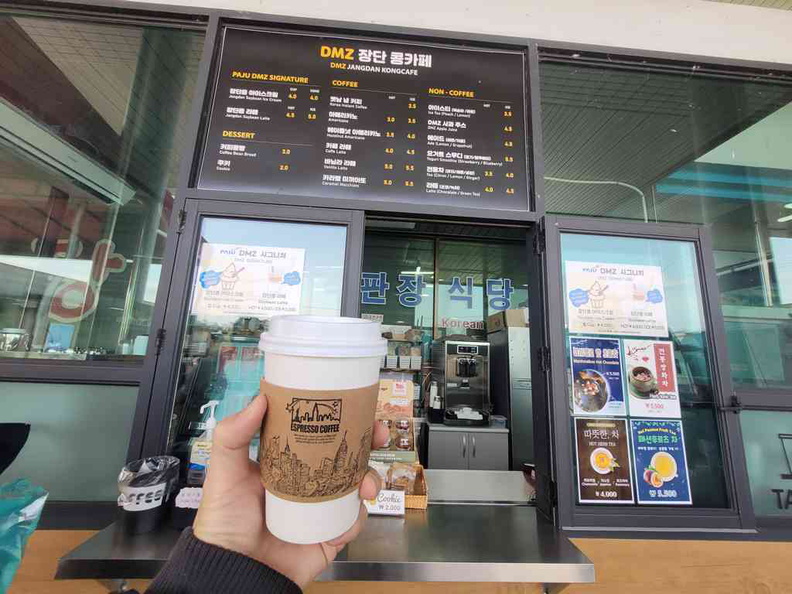
Here, there is a cafe called Jangdan kongcafe where you can try their soyabean coffee (4,000 won) and ice-cream (4,500 won) made from the produce grown right here in the DMZ. There is a supermarket here where you can pick up last purchases of souvenir merchandise and DMZ ginseng. This is also the last toilet stop before your 2 hour-plus journey back into the heart of Seoul city.
Overall, a visit to the South Korea DMZ is a unique and unforgettable experience. It offers a glimpse into the ongoing tensions between North and South Korea and the history of the Korean War. The tours are informative, and the guides are knowledgeable and passionate about their country’s history and culture. While the tension in the area is palpable, you can still appreciate the natural beauty of the region and the resilience of the Korean people.
















































